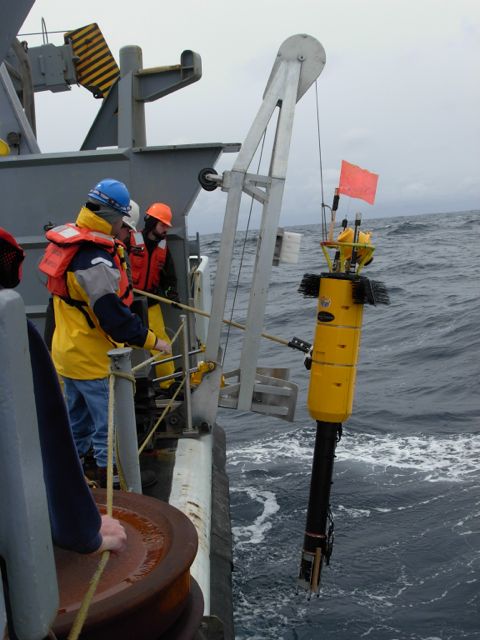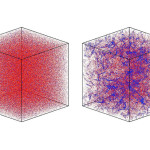 We’re very excited to introduce another guest post from Kim Martini here at DSN (read previous posts here). Kim is a physical oceanographer working at the University of Alaska, Fairbanks and as the post reveals below is interested in deep-ocean waves. You can find her on Twitter at @rejectedbanana. Make sure to comment below and welcome her to DSN.
We’re very excited to introduce another guest post from Kim Martini here at DSN (read previous posts here). Kim is a physical oceanographer working at the University of Alaska, Fairbanks and as the post reveals below is interested in deep-ocean waves. You can find her on Twitter at @rejectedbanana. Make sure to comment below and welcome her to DSN.
As oceanographers, we have a pretty good idea of how much mixing there should be in the ocean. But the problem is, we don’t actually know where it is. Sounds kinda crazy right?
We measure turbulence to figure out how water is mixed in the ocean. Ocean mixing is important because not only does it exchange water between the deep and shallow seas, but it will also transport small particles that are in water. This includes nutrients, sediments, and even sea beasties!

What makes mixing so hard to find is the fact that turbulence tends to be `patchy.’ Turbulence isn’t uniform across the ocean and doesn’t always occur at the same place or time everyday. Most of deep ocean, far away from the coasts, has really low levels of turbulence. Therefore, there must be places where there are really high levels of turbulence. We have found some of these high mixing regions, but still haven’t found enough to close global mixing budgets. This includes places like the Southern Ocean where wild winds whip the sea but also trashes ships, spots where currents flow over bathymetric bumps such as seamounts and ridges, and regions where waves break such as deep canyons and rugged continental slopes.

But all is not lost my friends, we will find the mixing! We know the winds and the tides pump energy into the ocean to mix it. And we know something about the pathways and processes that cause this energy to eventually degrade into turbulence. There is even some evidence that the daily migrations of plankton and swimming of sea life can mix the oceans. With this information we can go out and continue our search for the missing mixing.
So next time you meet a scientist that studies ocean turbulence, don’t forgot to tell them Happy Hunting!






South China Sea, I have spent many many months out in the SCS, I have been on Oil Rigs my own vessels Motor & Sailing, competed in many HK to Manila Yacht Club China Sea races and have experienced several Solitons. One such event stays with me, I was working on the Semi Submersible Nan Hai 5 off Hainan Isl, in 1,500 fsw, I was in the ROV shack and suddenly the Rig started to capsize, I was forced to the wall as I tried to fathom out what was happening then She began to right herself, good we were at drilling depth as the inclinometer wanted to go past the point of no return, another memorable incident was when the turbines at the Coal fired Power station at La Union were blocked / shut down due to the Jelly fish, my theory was that a Soliton shifted the mass of Jellies into the Gulf and drawn into the cooling system, otherwise there is not much more one can assume would have caused this incident. Many more tales frequent the South China Sea area and a large percentage seem to generate from the Batanes area between Northern Luzon and Southern Taiwan, “thebarnacle”